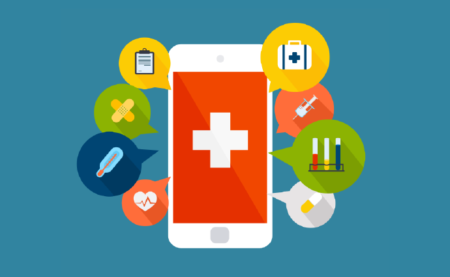Last week while conducting a virtual meetup on Zoom our group was talking about COVID-19. We were talking about testing and a person on the call briefly mentioned an experimental smartphone app that could detect COVID-19 from the sound of a voice. On the call was a public health doctor who immediately suggested that such an application was impossible.
I had to do a little bit of research to find out what was real, and what was not. Sure enough, a research team at Carnegie Mellon University was working on a COVID Voice Detector to analyze whether the person speaking into the smartphone has been infected or not. If you click on the above link you can contribute to the research by recording a sample of your voice to teach the app how to spot the differences between someone who is healthy or someone who has contracted the virus.
The app isn’t ready for prime time but the rationale for its potential use as a detection tool is based on science and uses artificial intelligence (AI). Stated Rita Singh, a professor of Computer Science who is involved with the project at Carnegie-Mellon, “The cough of a COVID patient is very distinctive…It affects the lungs so badly that breathing patterns and several other vital parameters are affected, and those are likely to have very strong signatures in voice.”
Needless to say, the app in theory could prove very helpful in identifying people with COVID-19 who otherwise may appear to be asymptomatic. As for its viability, the team is gathering as many voices as possible to train the AI to know the difference among various contributors, some healthy, some with other respiratory ailments, and some with COVID-19. My public health doctor in the end may prove to be right that the imperfectness of such an app based on the type of smartphone being used alone could render so many false results to make the test meaningless.
But that doesn’t mean smartphones can’t be very useful in diagnosing diseases. For example, I have the Kardia mobile app on my smartphone and when I detect a change in my heart rhythm or experience dizziness, I use it to tell me if I am in atrial fibrillation or bradycardia or experiencing tachycardia.
Then there is the work being done at Ludwig-Maximiliians-Universitaet (LMU) in Munich, Germany, where researchers are using light emitted by a single molecule and the optical capabilities of smartphones to do medical diagnostics. This is leading to diagnostic tests using a smartphone with a microscope attachment and an inexpensive laser to construct a portable laboratory diagnostic tool that can look at fragments of DNA in blood serum to pick up the presence of a bacterial infection. The LMU researchers have built an inexpensive prototype that they believe could become a reliable tool for smartphone users who can do diagnostic testing at home.
Today, a smartphone app synched to a smartwatch can be used to measure blood pressure, temperature, heart rate, blood oxygen levels, level of activity, sleep and wake cycles, and more. But this is just the simple stuff. What increasingly is becoming obvious is that the portable device that originally was meant for phoning friends, business associates and family, is becoming the tricorder of Star Trek fame. What won’t a smartphone be able to do in the next few years?
My smartwatch just reminded me by messaging my phone that I have been sitting for too long and need to get up and walk around. What a cheeky device!
















